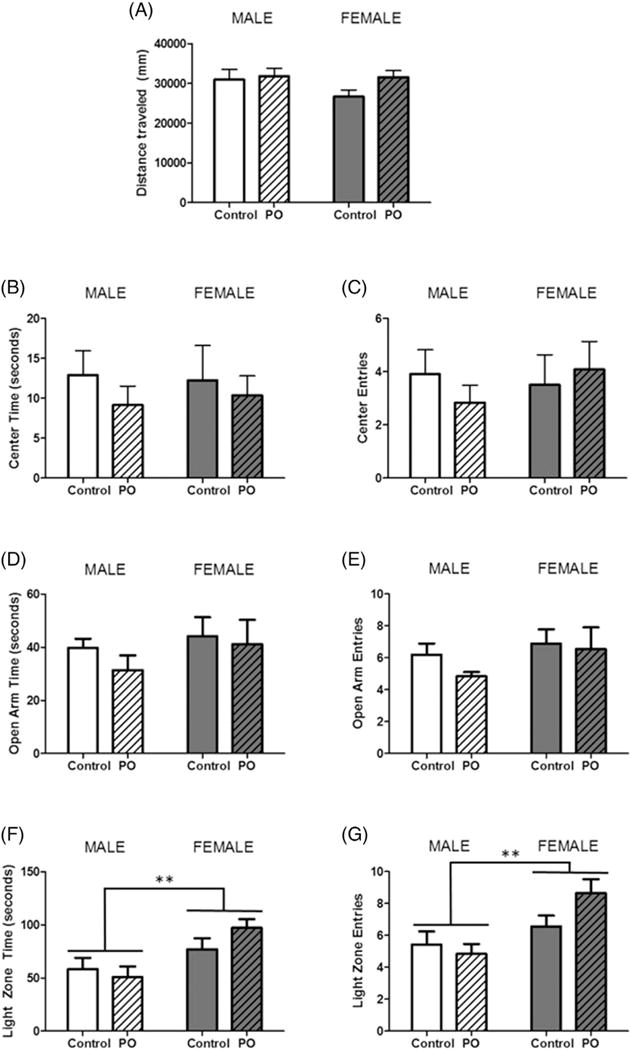Fig. 5.

Exposure to predator odor during postnatal development does not affect anxiety-like behavior in adolescence. Male and female pups subject to PO exposure from PN1–PN3 and unexposed controls were assessed for anxiety-like behavior in the open field test on PN26, the elevated plus maze on PN33 and the light/dark box on PN34. (A) All animals traveled the same distance in the OFT and there were no differences in time spent in the center (B) or entries into the center (C). In the EPM, neither PO exposure nor sex altered (D) time spent in the open arms or (E) number of entries in the open arms. The L/D box, revealed no effect of predator odor exposure on (F) time spent in the light zone or (G) entries into the light zone, however females spent more time and entered into the light zone more than males. (Data expressed as mean ± SEM. Control male group, n = 10;PO male group, n = 12; control female group, n = 10; PO female group, n = 12; two-way ANOVA and pairwise comparisons with Bonferroni correction: **p < 0.01.)
